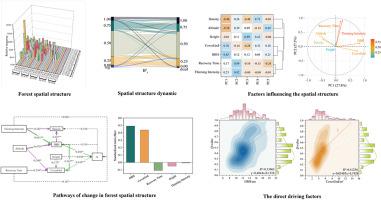当前位置:
X-MOL 学术
›
For. Ecosyst.
›
论文详情
Our official English website, www.x-mol.net, welcomes your feedback! (Note: you will need to create a separate account there.)
Drivers of spatial structure in thinned forests
Forest Ecosystems ( IF 3.8 ) Pub Date : 2024-03-16 , DOI: 10.1016/j.fecs.2024.100182 Zichun Wang , Yaoxiang Li , Guangyu Wang , Zheyu Zhang , Ya Chen , Xiaoli Liu , Rundong Peng
Forest Ecosystems ( IF 3.8 ) Pub Date : 2024-03-16 , DOI: 10.1016/j.fecs.2024.100182 Zichun Wang , Yaoxiang Li , Guangyu Wang , Zheyu Zhang , Ya Chen , Xiaoli Liu , Rundong Peng

|
As is widely known, an increasing number of forest areas were managed to preserve and enhance the health of forest ecosystems. However, previous research on forest management has often overlooked the importance of structure-based. Our objectives were to define the direction of structure-based forest management. Subsequently, we investigated the relationships between forest structure and the regeneration, growth, and mortality of trees under different thinning treatments. Ultimately, the drivers of forest structural change were explored. On the basis of 92 sites selected from northeastern China, with different recovery time (from 1 to 15 years) and different thinning intensities (0–59.9%) since the last thinning. Principal component analysis (PCA) identified relationships among factors determining forest spatial structure. The structural equation model (SEM) was used to analyze the driving factors behind the changes in forest spatial structure after thinning. Light thinning (0–20% trees removed) promoted forest regeneration, and heavy thinning (over 35% of trees removed) facilitated forest growth. However, only moderate thinning (20%–35% trees removed) created a reasonable spatial structure. While dead trees were clustered, and they were hardly affected by thinning intensity. Additionally, thinning intensity, recovery time, and altitude indirectly improve the spatial structure of the forest by influencing diameter at breast height (DBH) and canopy area. Creating larger DBH and canopy area through thinning will promote the formation of complex forest structures, which cultivates healthy and stable forests.
更新日期:2024-03-16
















































 京公网安备 11010802027423号
京公网安备 11010802027423号